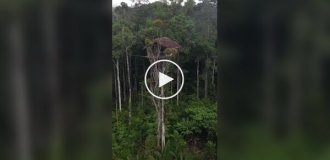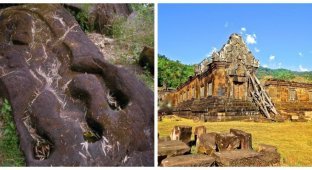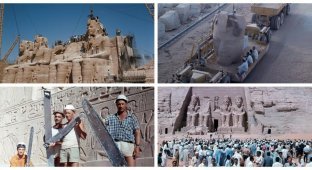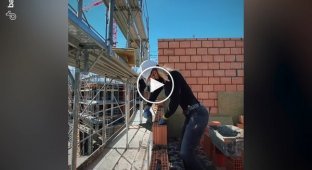Stegosaurus from Ta Prohm – a hoax, a mistake or evidence of the existence of dinosaurs in the times of mankind? (9 photos)
Every year, thousands of tourists flock to Cambodia to see the world's greatest architectural wonder, the Angkor Wat temple complex. 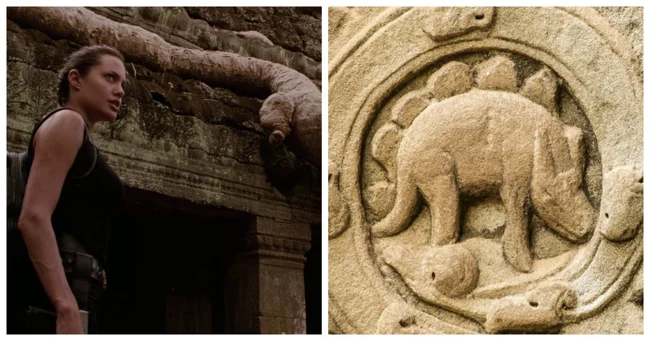
This monumental labyrinth of shrines, carved into stone in the 12th and 13th centuries by the divine rulers of the Khmer Empire, remains the largest religious complex on the planet. But even among these grandiose ruins, there is one mystery that most visitors simply do not notice - an engraving resembling a stegosaurus, carved into the wall of the ancient temple.
Ta Prohm: A Place Where Jungle Meets Stone 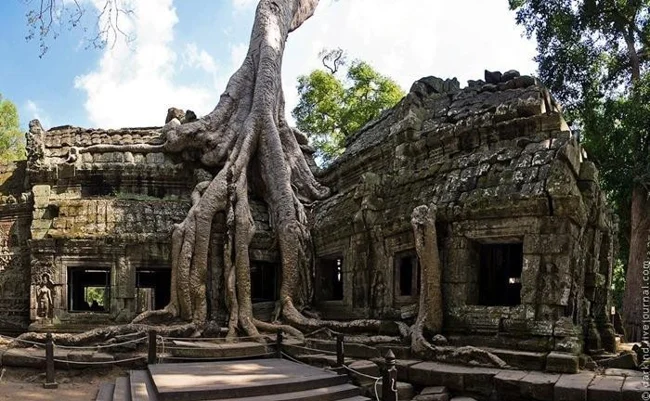
One of the most famous temples, Ta Prohm, was built at the end of the 12th century by King Jayavarman VII. This is a place where the roots of giant banyan trees weave into the ruins, and vines entangle the walls, as if nature is trying to protect the sanctuary from time. It is here, in a lost corner of the complex, that you can find a strange drawing: a stone reptile with fins on its back, which is strikingly reminiscent of a stegosaurus. 
The size of a palm, this engraving is hidden in a shady corner where tourists usually take selfies against the backdrop of tree roots. But if you look closely, your heart will beat faster. Stegosaurus? On the walls of a medieval temple? How is this possible?
Jungle, Hollywood and a Secret on the Stone 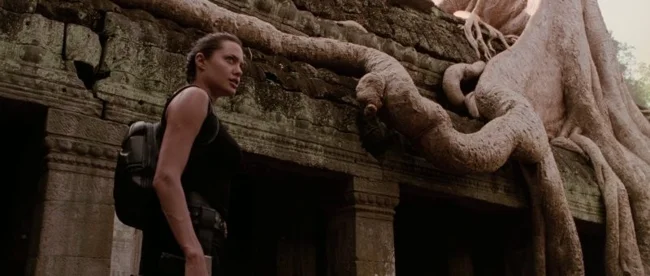
Still from the film "Lara Croft: Tomb Raider" (2001)
After the filming of the film "Lara Croft: Tomb Raider" (2001) in Ta Prohm, the popularity of the temple skyrocketed. But even in the crowd of tourists, non-stop taking photos, few people notice the ancient "dinosaur". Why? Because it is not in sight. It is like a joke of history, hidden in the cracks of the wall. 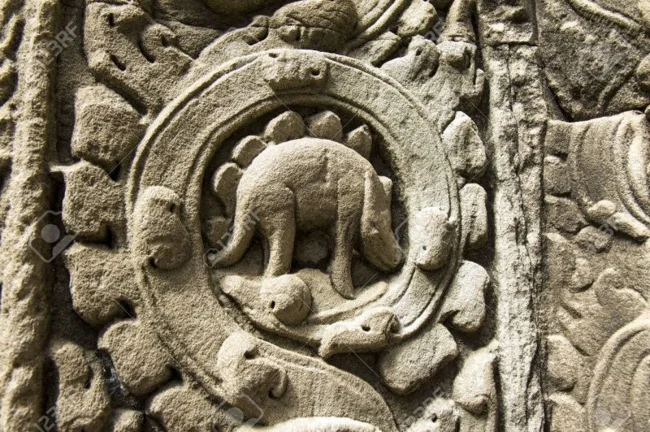
Mysterious Beast
Some are sure that this is a modern joke. Someone secretly carved a dinosaur to confuse researchers. But if it is a fake, then it is too accurate. After all, the stegosaurus on the stone repeats the outlines down to the smallest details.
Others suggest that the ancient Khmers could have found fossils and tried to depict an unknown creature. Perhaps they encountered the remains of the prehistoric world and tried to convey it in stone? 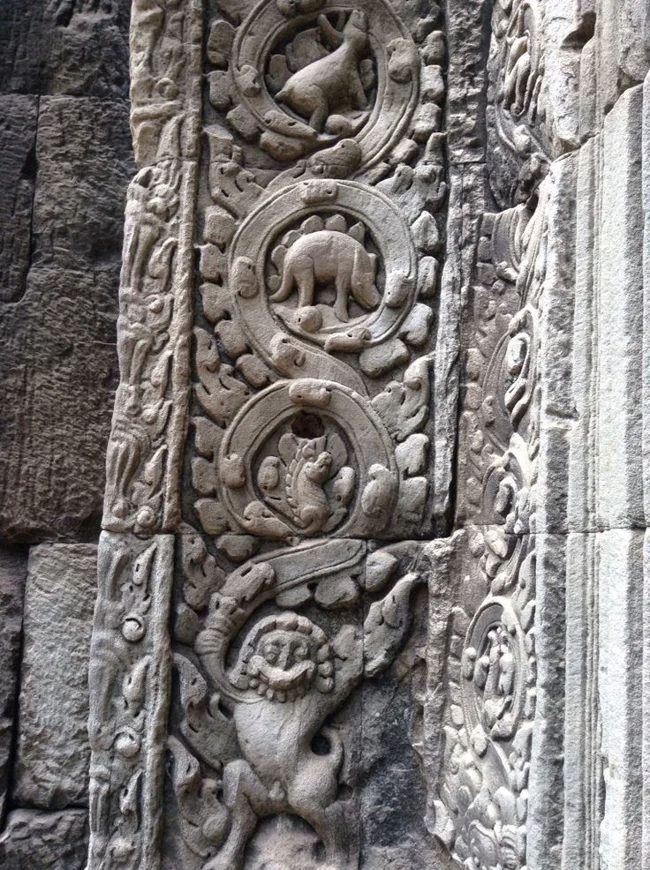
"Stegosaurus" in a bas-relief
There is also a more boring, but logical version: this is not a dinosaur, but a cow or a rhinoceros, behind which the artist hid a palm branch. Its leaves, they say, create the illusion of "fins" on the animal's back. Just a play of light and imagination. 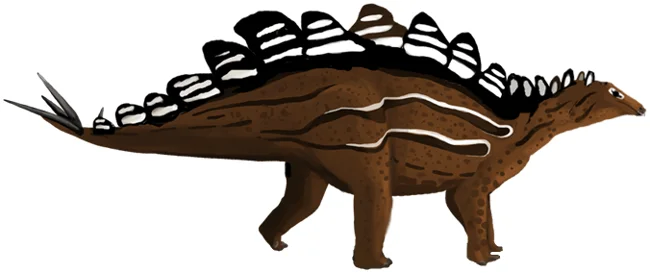
Reconstruction of a stegosaurus
Or maybe dinosaurs lived longer than we think? Perhaps in the tropics of Southeast Asia, where the climate has not changed for millennia, reptiles survived until the era of man, preserved in Khmer folklore as terrible monsters hiding in the jungle? 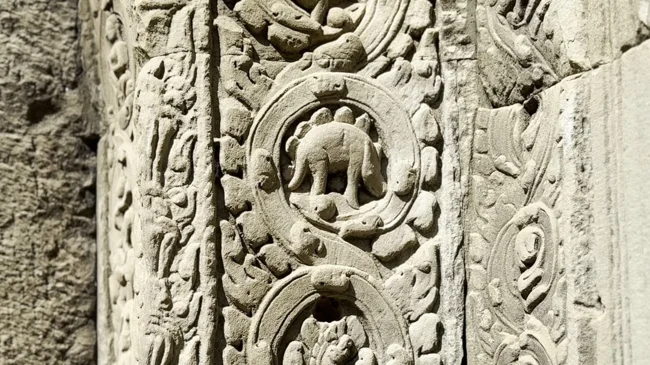
What did the stonemason depict? A coincidence? A trick of the light? Or is this the last message from an extinct world, preserved in stone? 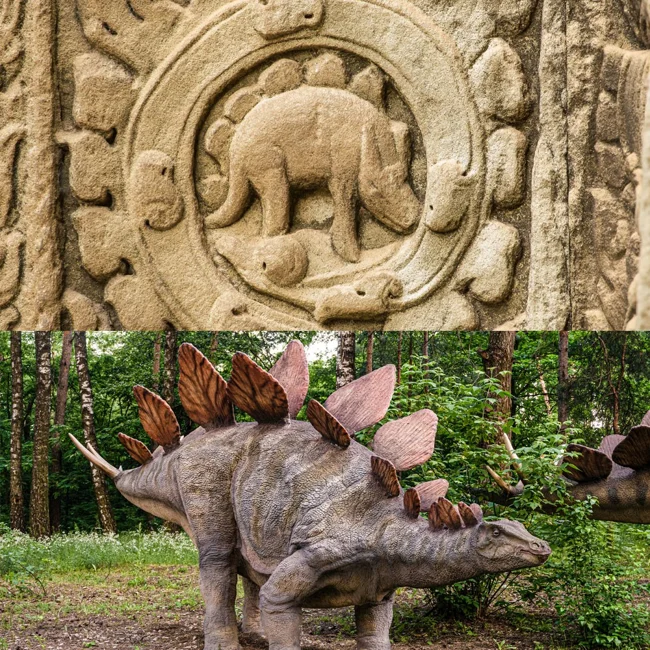
One thing is clear: Ta Prohm is not just a temple. It is a bridge between the past, the present, and what we do not yet understand.




